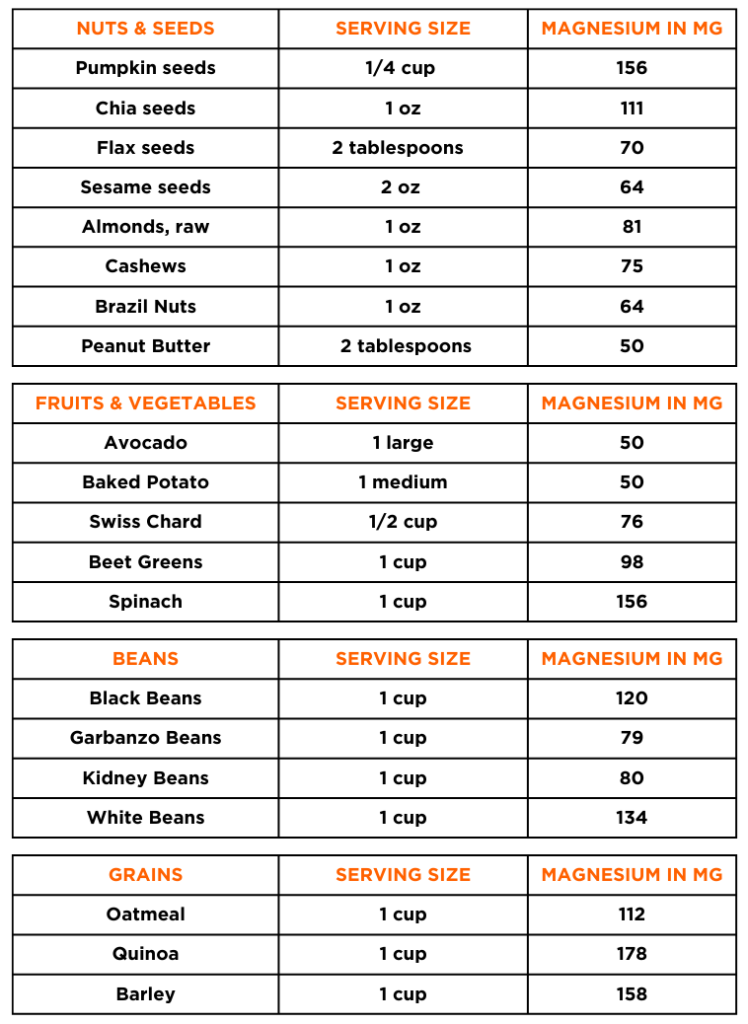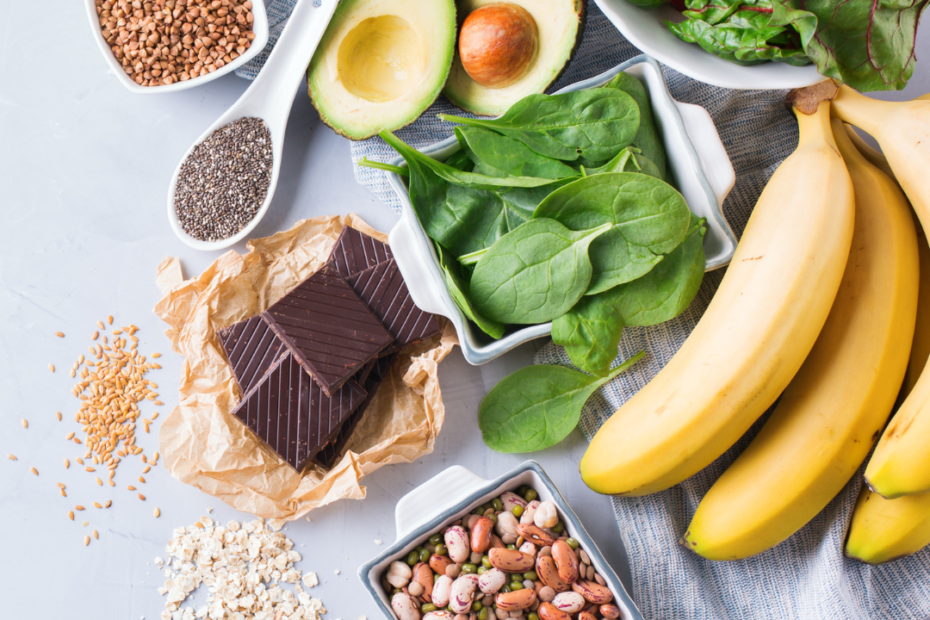Magnesium is one of the most abundant minerals in the body. It helps convert proteins, fats and carbohydrates to energy. It also helps manufacture proteins and synthesize the genetic material within each cell.
Magnesium is a powerhouse of a mineral that participates in over 300 biochemical reactions in the body. It functions in muscle relaxation and contraction, including the heart muscle, which helps support normal heart rhythm and blood pressure. Magnesium is essential for nerve function, producing blood platelets, maintaining bone density, while also aiding in the prevention of tooth decay. Even more, magnesium helps with the prevention of heart arrhythmias, (irregular heartbeat) and is known to be involved in glucose and insulin metabolism. Magnesium even helps with the absorption of calcium.
What is the Recommended Daily Allowance (RDA) for Magnesium?
| AGE | *Recommended Daily Allowance |
| Adult Males | 400-420 mg |
| Adult Females | 310-320 mg |
| Pregnant Females | 350 -360 mg |
| Breastfeeding Females | 310-320 mg |
| Adolescent Males & Females | 360 mg |
| Children 9-13 years | 240 mg |
| Children 4-8 years | 130 mg |
| Children 1-3 years | 80 mg |
| Infants from 7-12 months | 75 mg |
| Infants from birth to 6 months | 30 mg |
Magnesium is found naturally in food such as whole grains, leafy green vegetables as well as nuts, seeds, beans, avocado and certain fish. Although magnesium deficiency is rare in healthy people, many people fall short of the recommendation; nearly half of all Americans consume less than the RDA in their diets.
According to the Cleveland Clinic, signs of magnesium deficiency includes leg cramps, muscle spasms, numbness in hands or feet, fatigue, weakness, confusion, loss of appetite or rapid heartbeat. To boost your intake of magnesium try adding more of this mineral to your meals and snacks.
Specific sources can be found in the following table:

How to Add Magnesium to your Meals
Breakfast: 1 cup of cooked oatmeal made with reduced fat or soy milk, top with chopped almonds or a banana. Or Plain yogurt sprinkled with chia seeds or flaxseeds topped with raspberries
Lunch: Black bean soup with a slice of whole wheat bread topped with avocado. Or Spinach salad with garbanzo beans
Dinner: Salmon with a baked potato and broccoli. Or Halibut with quinoa and beet greens
Snack: 1 ounce of cashews, almonds or Brazil nuts with a cup of raspberries Or 1 cup of edamame with white bean dip
Content submitted by Janyce Gately – MS, RD, LDN, CHWC
Take the guesswork out of healthy eating by working with a registered dietitian. Set realistic goals, create an action plan, get started off on the right foot and receive guidance along the way. Reach out to the dietitians at Waverley Oaks to learn more at nutrition@waverleyoaks.com.
